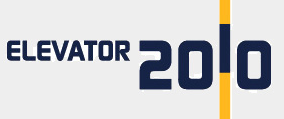Unsolved:Elevator:2010
Elevator:2010 was an inducement prize contest with the purpose of developing space elevator and space elevator-related technologies. Elevator:2010 organized annual competitions for climbers, ribbons and power-beaming systems, and was operated by a partnership between Spaceward Foundation and the NASA Centennial Challenges.
History
On March 23, 2005 NASA's Centennial Challenges program announced a partnership with the Spaceward Foundation regarding Elevator:2010, to raise the amounts of monetary prizes and to get more teams involved in the competitions.[1] The partnership was not renewed after its initial 5-year term.[2]
There were two (out of an intended seven) competitions of the NASA Centennial Challenges which fell under the Elevator:2010 banner: The Tether Challenge and the Beam Power Challenge. There were also the two original competitions.
Tether Challenge
This competition presented the challenge of constructing super-strong tethers, a crucial component of a space elevator.[3] The 2005 contest was to award US$50,000 to the team which constructed the strongest tether, with contests in future years requiring that each winner outperform that of the previous year by 50%. No competing tether surpassed the commercial off-the-shelf baseline and the prize was increased to $200,000 in 2006.
Of the four teams competing, three were disqualified for not following length rules—one of these cases by a fraction of a millimeter. Ultimately, the 'House Tether' won against the remaining team. The 'House Tether' is composed of Zylon fiber and M77 adhesive.[4] It was stronger than the machine used to test the tether itself: it began to fail at 1,600 pounds-force (7,100 N), forcing the test to be called off.[citation needed]
Beam Power Challenge
The Beam Power Challenge was a competition to build a wirelessly-powered ribbon-climbing robot. The contest involves having the robot raise a specified payload to a specific height within a limited period of time. The first competition in 2005 would have awarded US$50,000, US$20,000, and US$10,000 to the three best-performing teams meeting the minimum benchmark of 1 metre per second (3.3 ft/s). However no team met the minimum standard in 2005.
In 2006 the prize for first place increased to $150,000 with the goal of climbing 50 meters in under 1 minute. It was held October 20–21, 2006 at the Las Cruces International Airport at the Wirefly X PRIZE Cup. 13 teams entered the competition. Only one team, University of Saskatchewan, was able to climb the tether in under 1 minute, reaching the top in 58 s.[citation needed]
The Challenge had $500,000 in prize money for the 2007 competition.[citation needed]
At the 2009 Challenge, on November 6, 2009, LaserMotive successfully used lasers to drive a 4.8 kg (11 lb) device up a 900 m (2,950 ft) cable suspended from a helicopter.[5][6] Energy is transmitted to the climber using a high-power infrared beam.[7] LaserMotive's entry, which was the only climber to top the cable, reached an average speed of 13 km/h (8.1 mph) and earned a $900,000 prize. This marked both a performance record, and the first award of a cash prize at the Challenge.[6]
LaserMotive won the US$900,000 prize for the Level 1 power beaming prize in 2009 with the achievement of 2 metres per second (6.6 ft/s) climber speed over a sub-kilometer climb. The Level 2 power beaming prize, for a 5 metres per second (16 ft/s) climb, remains available for future competitions.[8]
Future competitions
After LaserMotive claimed the US$900,000 prize for the Level 1 power beaming prize in 2009, the Space Elevator games being conducted by Elevator:2010 planned to offer a prize purse for future competitions of US$4,000,000, for both the Power Beaming (Climber) Competition and the Tether Strength Competition.[8]
The Japan Space Elevator Association conducted climbing competitions[9] in August 2013.
See also
- KC Space Pirates
- Launch loop
- Lightcraft
- Lunar space elevator
- Non-rocket spacelaunch
- Skyhook (structure)
- Space elevator construction
- Space elevator economics
- Space elevators in fiction
- Space elevator safety
- Space fountain
- Space gun
- Tether propulsion
References
- ↑ "NASA Announces First Centennial Challenges' Prizes". NASA. March 23, 2005. http://www.nasa.gov/home/hqnews/2005/mar/HQ_m05083_Centennial_prizes.html. Retrieved 2008-02-12.
- ↑ "NASA, the Space Elevator Challenges and the Kansas City Space Pirates". www.spaceelevatorblog. 24 September 2012. http://www.spaceelevatorblog.com/?p=1544. Retrieved 2013-08-25.
- ↑ "Welcome to Elevator:2010's annual climber competition". Spaceward. Archived from the original on 2008-02-01. https://web.archive.org/web/20080201135351/http://spaceward.org/elevator2010-ts. Retrieved 2008-02-12.
- ↑ "How close is the Space Elevator? How expensive will it be?- Data Point References". http://www.spaceward.org/elevator-when.
- ↑ "Second Day Results". Space Elevator Games. The Spaceward Foundation. 2009-11-05. http://www.spaceelevatorgames.org/second-day-results/. Retrieved 2009-11-07.
- ↑ Jump up to: 6.0 6.1 Moskowitz, Clara (2009-11-06). "Seattle Team Wins $900,000 in Space Elevator Contest". Space.com. http://www.space.com/news/091106-space-elevator-games-results.html. Retrieved 2009-11-07.
- ↑ "Main". Blog. LaserMotive. Archived from the original on 2009-10-18. https://web.archive.org/web/20091018103923/http://www.lasermotive.com/blog/. Retrieved 2009-11-07.
- ↑ Jump up to: 8.0 8.1 "Elevator:2010 - the Space Elevator Challenge". spaceward.org. Archived from the original on 2010-01-18. https://web.archive.org/web/20100118153108/http://www.spaceward.org/elevator2010. Retrieved 2011-03-14. "The level 1 (2 m/s) challenge was met by team LaserMotive from Seattle, who took home $900,000. The level 2 (5 m/s) challenge remains unclaimed. ...prize money is provided by NASA's Centennial Challenges program—a total of $4,000,000 over the next 5 years"
- ↑ "Main" (in japanese). Blog. JSEA. http://www.jsea.jp/technology/challenge/000405.html. Retrieved 2013-08-24.
External links
 |





